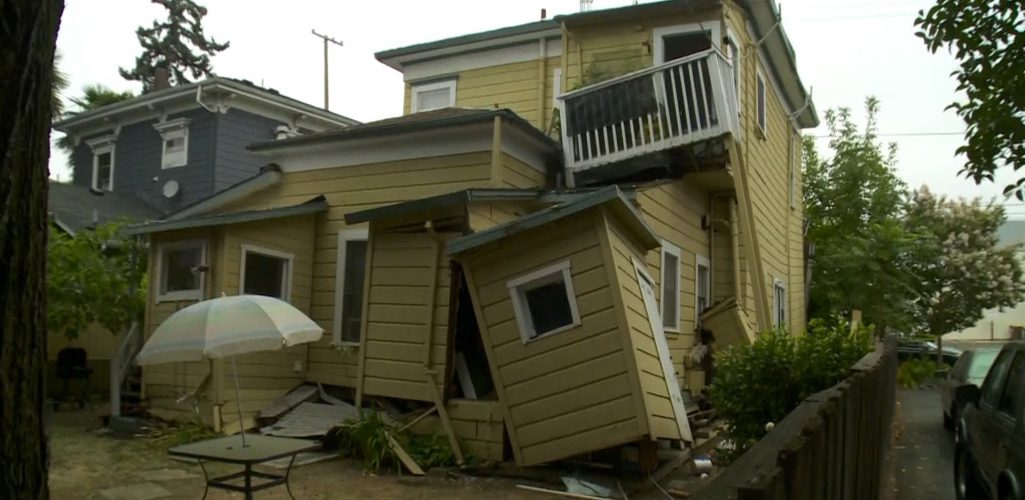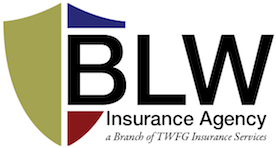Do you remember this moment in your own life?
Daniel had just gotten his first paycheck. He had kept track of the hours he’d worked and calculated exactly how much he’d earned in his first pay period. (And made plans on what to buy with the money!)
But when he ripped open the envelope, he was shocked. The check was for less than what he’d calculated. Surely, it was a mistake. But as he looked closer, he saw why. Deductions for FICA and income taxes had reduced the amount of his check.
I remember having the very same feeling when I was his age. It’s a big disappointment when the check you get is for less than the check you were expecting.
It can happen after an insurance claim too and I don’t want you to be caught unaware. So stay with me, and I’ll explain what you need to know in easy-to-understand language.
When your home, personal property, or business building is insured, the policy will pay claims one of two ways.
Replacement Cost Insurance
The first is replacement cost insurance. Basically, if you have replacement cost coverage, the insurance company will pay to put you back where you were before the loss.
If your home or office is damaged, it will be repaired to the way it was before the damage, with materials of similar quality to what you had before.
For personal property like a couch, you’ll be able to replace it with a new one like the one you had. Replacement cost doesn’t mean you’ll be able to replace a basic fabric couch with a huge leather sectional with built-in recliners. It’s truly replacement cost — no upgrades.
Actual Cash Value Insurance
The second way claims are paid is called actual cash value, or ACV.
While replacement cost insurance pays you enough to replace the property with new materials, actual cash value only pays the value of the property when it was damaged or destroyed.
In other words, ACV takes into account the age of the property and the fact that the value decreases over time, known as “depreciation.”
For example, let’s say your 10-year-old roof was damaged in a storm and the entire roof needs to be replaced. The cost to replace the roof is $12,000 and it’s halfway through its anticipated life of 20 years.
Replacement cost insurance will pay the full $12,000 cost to replace the roof with the same type of shingles you have now.
Actual cash value insurance might only pay $6,000 — the replacement cost of the roof minus 10 years of depreciation.
That’s a big difference!
While we’re talking about actual cash value, let me explain the two ways insurance companies calculate an ACV claim payment.
One option is to estimate the fair market value of the property when the loss occurs. Fair market value is what a willing buyer would have paid for the property before it was damaged or destroyed.
As you can imagine, it can be tricky to determine fair market value, especially when it isn’t a total loss.
The other option is to determine ACV by taking replacement cost and subtracting depreciation.
Unless the insurance policy states otherwise, California statute says this is the way the ACV calculation should be made.
In our previous example, the replacement cost is $12,000 and the depreciation is $6,000 so the amount paid for the claim will be $6,000.
Obviously, you’d rather get a check for the replacement cost value so why would anyone buy an actual cash value policy?
Actual Cash Value vs. Replacement Cost
You may not have realized it, but your auto policy is a type of ACV policy. If your 4-year-old Prius is totaled, you’re paid the value of your car at the time of the wreck, not what it would cost you to buy a brand new one.
(This is one of the reasons gap insurance is so important if you have a leased car. See what I say about gap insurance in this article.)
Sometimes, if a house or other building is in very poor condition, the insurance company isn’t willing to provide replacement cost insurance for it. ACV may be the only option.
Since the premium is lower, it can be tempting to purchase ACV insurance. But the difference in the payment after a claim can lead to regret — especially since replacement cost insurance only costs a little more than ACV.
It’s even possible for the policy to have both replacement cost and ACV provisions.
One example is when the building has replacement cost insurance but the contents don’t.
Another situation is when a home has replacement cost coverage except for the roof, which has ACV coverage. This is a trend across the country; especially in states that see frequent hail storms.
The insurance companies discovered many people weren’t replacing their roofs when needed, hoping a hailstorm would come and their insurance policy would provide the money for the new roof!
Replacement Cost Claims Payments
There is one quirk about replacement cost insurance — you don’t get a check for the full replacement cost until you’ve actually replaced the property that was damaged or destroyed.
For example, if your home is destroyed in a fire, you won’t receive a check for the full replacement cost of the home right away.
Instead, the company will pay you for the actual cash value of the home. Once it’s rebuilt (or you purchase a new one), the company pays the remaining difference between ACV and replacement cost.
Guaranteed Replacement Cost
Even policies with replacement cost coverage have a maximum they will pay — the amount shown as the limit of liability on the policy.
Sometimes, the cost to replace the damaged property is more than the limit of the policy. That’s where Guaranteed Replacement Cost, sometimes called Extended Replacement Cost, comes in. It will make sure you can completely replace your damaged property.
Another situation that arises is when the building codes have changed since the initial construction date, or when the building code dictates that a partially damaged structure must be completely torn down and rebuilt.
In order to pay for additional construction costs related to building code changes, you’ll need a special endorsement to your policy.
As you can see, making sure your policy will pay what you expect it to pay isn’t always simple! That’s why we are here — just ask us and we’ll make sure you don’t have any claims payment surprises if you have a loss.


